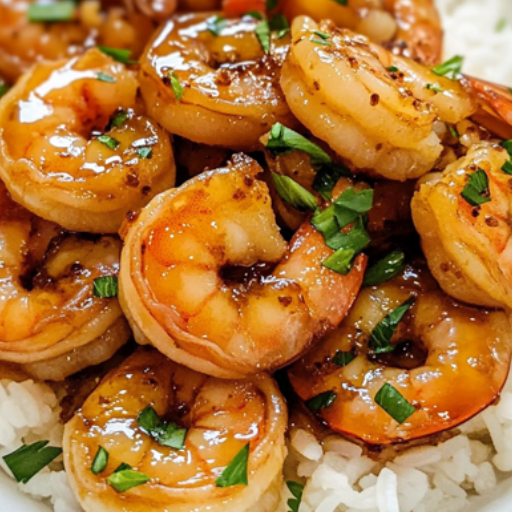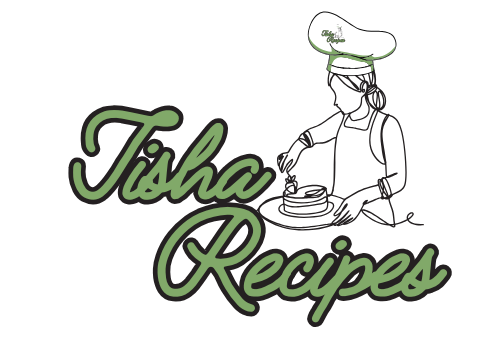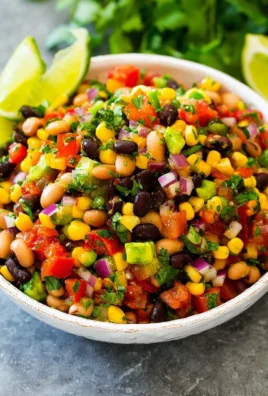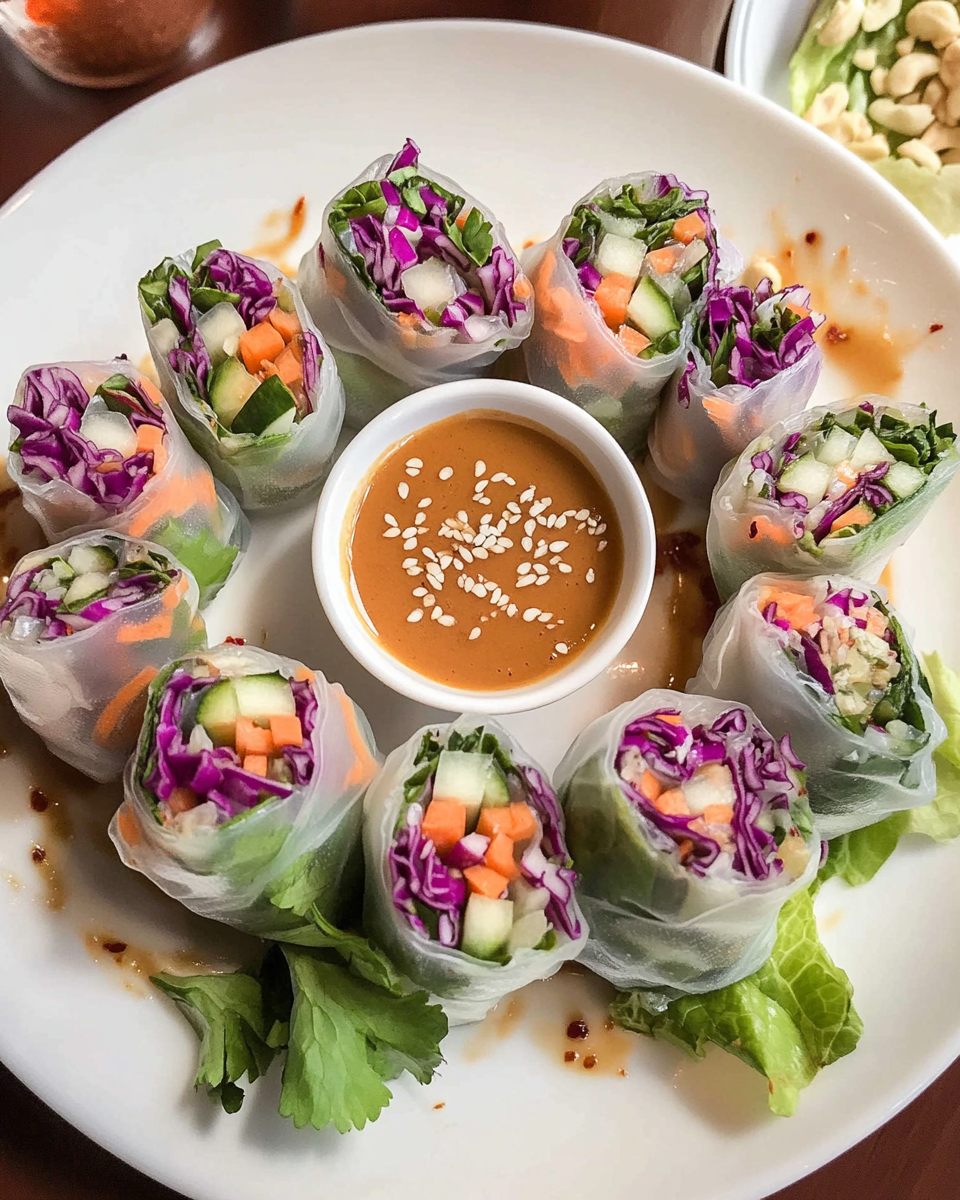
When it comes to flavor-packed meals that are easy to prepare, few dishes compare to Honey Garlic Shrimp with Steamed Rice. It’s a delicious blend of sweet, savory, and umami-rich notes—all served over a bed of perfectly cooked rice. From its glossy caramelized sauce to its juicy, seared shrimp, this dish is a weeknight hero and a crowd-pleasing favorite. Whether you’re looking for a wholesome dinner option or a protein-rich meal for lunch prep, this recipe delivers on all fronts.
The best part? It’s fast. Really fast. Shrimp cook in minutes, and the sauce comes together in the time it takes to steam the rice. You don’t need to spend hours in the kitchen or break the bank on expensive ingredients to enjoy something truly restaurant-worthy.
This dish combines elements from Asian and Western cuisines, making it a fusion favorite across households worldwide. The bold punch of garlic, the mellow sweetness of honey, and the savory depth of soy sauce work in perfect harmony. It’s versatile enough for meal prep, yet elegant enough to serve at dinner parties with ease.
Whether you’re new to cooking shrimp or a seasoned home chef looking for something fresh, this recipe offers flavor, convenience, and nourishment in every bite.
The Origins and Cultural Background
While shrimp and garlic have been longstanding ingredients in cuisines around the world, the combination of honey garlic sauce with stir-fried shrimp is widely associated with Chinese-American cooking. This flavor profile—equal parts sweet and savory—has been a staple in American takeout menus, especially under the guise of honey garlic chicken, honey shrimp, or garlic prawns.
In East and Southeast Asian cuisine, these flavors are already familiar. Sweetened soy glazes, garlic-based sauces, and ginger-honey marinades are common in Chinese, Thai, and Japanese cooking. As a result, honey garlic shrimp represents a global palate—a recipe shaped by cultural intermingling and adapted for home kitchens in the West.
Steamed rice, the simple but essential base of this dish, reflects a wide array of culinary traditions—from Chinese jasmine rice to Japanese sushi rice, to the aromatic basmati of South Asia. Its role here is to absorb the sweet and sticky sauce while offering balance to the boldness of the shrimp glaze.
The dish’s cross-cultural identity makes it easy to modify, remix, and personalize. You can keep it simple for quick weeknight dinners or layer in vegetables, spice, and herbs for a more gourmet feel.
Why You’ll Love This Recipe
-
Fast cooking: Shrimp cook in under 5 minutes.
-
Balanced flavor: Sweet honey, pungent garlic, umami-rich soy sauce.
-
Minimal ingredients: Pantry staples plus fresh shrimp and rice.
-
Customizable: Works with tofu, chicken, or veggies.
-
Meal prep friendly: Stores and reheats beautifully.
-
Nutrient-rich: High protein, low fat, and full of minerals.
Kitchen Tools & Equipment
To prepare this dish with ease and efficiency, you’ll need a few basic kitchen tools:
-
Large skillet or wok – Non-stick or stainless steel for searing the shrimp and cooking the sauce.
-
Medium saucepan or rice cooker – For preparing steamed rice.
-
Mixing bowls – To marinate shrimp and prep ingredients.
-
Whisk or fork – For mixing the sauce.
-
Tongs or slotted spoon – For turning shrimp in the pan.
-
Garlic press or microplane – For finely mincing garlic.
-
Measuring spoons and cups – Precision makes a difference in flavor.
Ingredient Guide
Shrimp
-
Type: Medium or large shrimp work best. Look for peeled and deveined.
-
Fresh vs Frozen: Frozen shrimp are just as good when thawed properly.
-
Tails on or off: Tails off for easy eating, tails on for presentation.
Honey
-
Flavor: Choose a mild variety like clover, orange blossom, or wildflower. Avoid dark, overpowering honeys.
-
Quality: Raw honey adds a richer taste and more health benefits.
Garlic
-
Fresh cloves: Always use fresh garlic for maximum aroma.
-
Minced finely: Helps disperse flavor evenly throughout the sauce.
Soy Sauce
-
Type: Light soy sauce is standard. You can use low-sodium to reduce saltiness.
-
Alternative: Tamari or coconut aminos for gluten-free version.
Rice
-
Type: Jasmine or long-grain white rice is best for steamed consistency.
-
Alternatives: Brown rice for added fiber, or cauliflower rice for low-carb version.
Optional Ingredients
-
Sesame oil: Adds nutty depth.
-
Chili flakes or sriracha: For heat.
-
Rice vinegar or lime juice: For brightness.
-
Green onions or sesame seeds: For garnish.
Ingredients List (Full Measurements)
For the Shrimp:
-
1 lb medium or large shrimp, peeled and deveined
-
3 tablespoons honey
-
2 tablespoons light soy sauce
-
2–3 garlic cloves, finely minced
-
1 tablespoon olive oil or sesame oil
-
1 teaspoon rice vinegar or lime juice (optional)
-
Salt and pepper to taste
-
Red pepper flakes (optional)
For the Rice:
-
1½ cups jasmine or long-grain white rice
-
2¼ cups water
-
Pinch of salt (optional)
Step-by-Step Instructions
Step 1: Prepare the Rice
-
Rinse the rice thoroughly under cold water until the water runs clear. This removes excess starch and prevents gumminess.
-
In a medium saucepan, combine the rinsed rice and measured water (usually 1:1.5 rice to water ratio).
-
Bring to a boil over medium-high heat.
-
Once boiling, reduce heat to low, cover, and simmer for 15 minutes.
-
Remove from heat and let sit (covered) for 10 minutes. Then fluff with a fork.
Alternative: Use a rice cooker for convenience.
Step 2: Marinate the Shrimp
-
In a bowl, combine shrimp, 1 tablespoon soy sauce, 1 minced garlic clove, and a pinch of pepper.
-
Toss well and let sit for 10–15 minutes at room temperature while you prepare the sauce and finish rice.
Note: Don’t marinate too long—shrimp are delicate and can get mushy.
Step 3: Make the Honey Garlic Sauce
-
In a small bowl, whisk together:
-
3 tablespoons honey
-
1 tablespoon soy sauce
-
2 minced garlic cloves
-
1 teaspoon rice vinegar or lime juice (optional)
-
-
Taste the sauce and adjust for balance:
-
More honey for sweetness
-
More soy for salt
-
Vinegar or lime for brightness
-
Step 4: Cook the Shrimp
-
Heat a large skillet or wok over medium-high heat. Add oil.
-
When the oil shimmers, add shrimp in a single layer (do not overcrowd).
-
Cook for 1½–2 minutes on each side until pink and opaque.
-
Remove shrimp from the pan and set aside.
Step 5: Glaze the Shrimp
-
In the same pan, lower heat to medium.
-
Pour in the honey garlic sauce and stir gently.
-
Let it simmer for 1–2 minutes until slightly thickened and bubbly.
-
Return shrimp to the pan and toss to coat evenly.
-
Let it simmer for another 1–2 minutes until the sauce clings to the shrimp and forms a glossy glaze.
Step 6: Plate and Serve
-
Spoon freshly steamed rice onto plates or bowls.
-
Top with glazed shrimp and spoon extra sauce over the rice.
-
Garnish with chopped scallions, sesame seeds, or a wedge of lime.
Ideal Side Dishes to Serve with Honey Garlic Shrimp and Rice
While the sweet and savory flavor of honey garlic shrimp over steamed rice can certainly stand on its own, it shines even brighter when served with the right side dishes. The goal is to complement the flavor profile—balancing richness with freshness, sweetness with acidity, and softness with crunch. Here are several side dish ideas that pair beautifully with this dish.
1. Stir-Fried Vegetables
A medley of stir-fried vegetables offers vibrant color, texture, and nutritional density. Use vegetables like broccoli, carrots, snap peas, bell peppers, and mushrooms. A light garlic or soy glaze enhances flavor without overshadowing the main dish.
Preparation tip: Cook vegetables quickly on high heat to retain crispness and brightness. Add a splash of sesame oil or rice vinegar for extra depth.
2. Asian Cucumber Salad
Cool and refreshing, cucumber salad adds a contrasting temperature and acidity to the warm shrimp and rice. It’s often made with thinly sliced cucumbers, rice vinegar, sesame oil, a pinch of sugar, and red chili flakes.
Flavor tip: Let it chill for 15–20 minutes before serving to enhance its pickled tang and crunch.
3. Steamed or Sauteed Bok Choy
Bok choy is mild, slightly sweet, and tender—an ideal match for the bold honey garlic glaze. A simple saute with garlic, a dash of soy sauce, and a sprinkle of sesame seeds turns this into an elegant accompaniment.
Quick method: Steam bok choy for 3–4 minutes, then toss in a pan with garlic-infused oil.
4. Edamame with Sea Salt
Steamed edamame is a clean and protein-rich side dish that adds contrast in both texture and color. Lightly seasoned with flaky sea salt, it provides a subtle umami note that complements the main dish.
Optional: Add chili oil or toasted sesame for flavor layering.
5. Pickled Radishes or Kimchi
These fermented and pickled vegetables introduce tangy, spicy, and acidic elements that cut through the sweetness of the shrimp glaze. They also support digestion and add probiotic benefits.
Pairing tip: Serve small amounts on the side, as palate cleansers between bites.
6. Garlic Green Beans
Crisp-tender green beans sauteed with garlic and sesame oil deliver a bold, crunchy complement to the soft rice and shrimp. The savory kick from the garlic ties in perfectly with the honey garlic theme.
Seasoning idea: Add soy sauce, a touch of hoisin, or crushed red pepper flakes.
7. Mango Avocado Salad
This light, fruity salad introduces creaminess and tropical freshness. Chunks of ripe mango and avocado are tossed with lime juice, salt, and cilantro for a refreshing pairing.
Flavor contrast: The sweet mango mirrors the honey glaze, while lime balances richness.
8. Miso Soup
A light miso broth with tofu, scallions, and seaweed works well as a starter. Its umami notes and comforting warmth set the stage for the more robust flavors of the shrimp dish.
Optional additions: Enoki mushrooms, bok choy, or soba noodles.
Nutritional Breakdown
Honey Garlic Shrimp with Steamed Rice is more than just flavorful—it’s nutrient-dense and balanced. It provides lean protein, complex carbohydrates, and beneficial micronutrients. Here’s a comprehensive overview of its nutritional profile per serving (approximately one bowl with ¾ cup cooked rice and 6 ounces of shrimp):
Macronutrients
-
Calories: 380–450 kcal
-
Protein: 30–35 grams
-
Fat: 10–14 grams
-
Saturated Fat: 2–3 grams
-
Unsaturated Fat: 7–10 grams
-
-
Carbohydrates: 35–45 grams
-
Sugar: 10–15 grams (from honey and optional sauce)
-
Fiber: 1–2 grams
-
Micronutrients
-
Vitamin B12: High, due to shrimp content (supports nervous system health)
-
Vitamin D: Present in trace amounts from shrimp (a rare dietary source)
-
Iron: Moderate levels from shrimp and soy sauce (supports oxygen transport)
-
Zinc: Supports immunity and healing
-
Selenium: Essential antioxidant from shrimp
-
Potassium: Present in garlic, soy sauce, and rice
-
Iodine: Naturally occurring in seafood
Health Benefits
-
High Protein: Shrimp offers a lean protein source with all essential amino acids.
-
Low Calorie Density: Shrimp are low in calories, making this meal filling but light.
-
Cardiovascular Support: Garlic and unsaturated fats contribute to heart health.
-
Anti-inflammatory Properties: Garlic, honey, and shrimp offer compounds that reduce inflammation.
-
Digestive Support: If paired with fiber-rich sides like edamame or pickled veggies, this dish helps regulate digestion.
Dietary Suitability
-
Gluten-Free: Can be made gluten-free by using tamari instead of regular soy sauce.
-
Dairy-Free: Naturally dairy-free.
-
Low Carb Options: Replace rice with cauliflower rice for a keto or low-carb version.
-
Pescatarian-Friendly: Fits perfectly into seafood and plant-based diets.
Common Mistakes to Avoid & How to Fix Them
Even a seemingly simple recipe like honey garlic shrimp with rice has its technical elements. Below is a list of common cooking mistakes, why they matter, and how to correct or avoid them.
Mistake 1: Overcooking the Shrimp
What happens: Shrimp become rubbery, curled too tightly, and lose moisture.
How to avoid: Cook shrimp on medium-high heat for just 1½ to 2 minutes per side. They should turn opaque and form a “C” shape—not a tight “O.”
Pro tip: Remove them from the pan as soon as they’re done. Residual heat will continue to cook them slightly even off the heat.
Mistake 2: Not Balancing the Sauce
What happens: Sauce becomes too sweet, too salty, or too thin.
How to avoid: Taste your sauce before adding it to the shrimp. Adjust honey, soy sauce, or acid accordingly.
Fixes:
-
Too sweet? Add lime juice or vinegar.
-
Too salty? Add a bit of water or more honey.
-
Too thin? Let it simmer longer or add a cornstarch slurry (1 tsp cornstarch + 1 tbsp cold water).
Mistake 3: Cooking Shrimp Straight from the Fridge or Frozen
What happens: Uneven cooking, excessive water in the pan, or mushy texture.
How to avoid: Bring shrimp to room temperature before cooking and always pat them dry to remove surface moisture.
Note: If using frozen shrimp, thaw them in a colander under cold running water and dry them completely before seasoning.
Mistake 4: Skipping the Marination Step
What happens: Shrimp lack flavor and don’t carry the sauce well.
How to avoid: A brief 10–15 minute marinade in soy sauce, garlic, and pepper adds immense depth. Do not marinate longer than 30 minutes to avoid textural issues.
Mistake 5: Using Low-Quality Honey
What happens: The sauce may taste artificial or overly sweet without complexity.
How to avoid: Use raw, natural honey for a deeper, more nuanced flavor. Avoid highly processed honey blends with additives or corn syrup.
Mistake 6: Cooking Rice Incorrectly
What happens: Rice becomes gummy, too soft, or undercooked.
How to avoid:
-
Always rinse rice thoroughly before cooking to remove excess starch.
-
Use the correct water ratio for your rice type (usually 1:1.5 for jasmine rice).
-
Let rice rest after cooking to finish steaming internally.
Pro tip: Use a rice cooker for consistent, fluffy results every time.
Mistake 7: Overcrowding the Pan
What happens: Shrimp steam instead of sear, and sauce won’t reduce properly.
How to avoid: Cook in batches if your pan is small. Always use high heat and give shrimp space to sear.
Mistake 8: Not Letting the Sauce Thicken
What happens: Sauce pools at the bottom of the plate instead of clinging to shrimp.
How to avoid: Let the sauce simmer briefly until it reduces and thickens. Return shrimp to the pan only at the end for a quick coat.
Expert Tips to Elevate Your Honey Garlic Shrimp
Even the simplest recipes can be transformed with a few professional techniques. Here are detailed culinary tips to make your honey garlic shrimp exceptional every time you prepare it.
Use Room Temperature Shrimp for Even Cooking
Cold shrimp from the fridge can lower the pan temperature and lead to uneven cooking. Let shrimp sit out for 15–20 minutes before cooking to allow them to come closer to room temperature. This step ensures a better sear and juicier texture.
Dry Shrimp Thoroughly Before Searing
Moisture prevents browning. Pat the shrimp dry with paper towels before adding them to the hot pan. This allows the shrimp to develop a slightly crispy exterior and helps the sauce stick better.
Sear in a Hot Pan for Flavor
Start with a well-heated skillet or wok and use a small amount of oil with a high smoke point. Searing adds depth of flavor and locks in natural juices. Do not overcrowd the pan—work in batches if needed.
Infuse Oil with Garlic
Before adding the sauce or shrimp, heat your oil with minced garlic for 30 seconds. This infuses the oil and creates a more aromatic base, layering in flavor early in the cooking process.
Let the Sauce Reduce Before Returning Shrimp
For a sticky, glossy glaze, simmer the honey garlic sauce on its own before adding shrimp back to the pan. This ensures the sauce thickens and clings to the shrimp without overcooking them.
Add a Finishing Touch of Acid
A squeeze of lime juice or a splash of rice vinegar at the end of cooking brightens the dish and cuts through the sweetness of the honey. This creates balance and keeps the flavor profile clean and vibrant.
Use Aromatic Garnishes
Garnishing is not just for appearance—it adds another layer of aroma and taste. Use chopped green onions, cilantro, toasted sesame seeds, or a drizzle of chili oil to finish the dish.
Recipe Variations and Customizations
Honey Garlic Shrimp with Steamed Rice is incredibly versatile. These creative variations and dietary swaps make the recipe flexible for different preferences and occasions.
Protein Variations
Chicken
Thinly sliced chicken breast or boneless thighs can be used in place of shrimp. Cook slightly longer—4 to 5 minutes per side—until golden and cooked through.
Tofu
Use extra-firm tofu, pressed and cut into cubes. Pan-fry until golden and crispy before adding to the sauce. Great for vegetarian or vegan diets.
Tempeh
Sliced tempeh adds a nutty flavor and dense texture. Steam briefly before sautéing for a softer bite.
Scallops or Fish
Sea scallops or firm white fish (like cod or halibut) can replace shrimp. Handle gently and cook until opaque and flaky.
Sauce Variations
Spicy Honey Garlic Sauce
Add chili garlic paste, red pepper flakes, or fresh minced chili to the sauce for heat lovers.
Ginger Garlic Shrimp
Grate fresh ginger into the sauce to add a warm, peppery kick that complements the garlic.
Coconut Honey Garlic Sauce
Add a few tablespoons of coconut milk for a creamy twist. This softens the sweetness and adds tropical notes.
Orange Honey Garlic Sauce
Replace half of the honey with fresh orange juice and add a teaspoon of zest for a citrusy version.
Rice Alternatives
Brown Rice
Higher in fiber and nutrients, brown rice offers a chewy, nutty base.
Coconut Rice
Cook rice with coconut milk and a pinch of sugar for an island-style variation.
Cauliflower Rice
A great low-carb option that’s quick to prepare and soaks up sauces beautifully.
Jasmine or Basmati Rice
These fragrant long-grain rices are ideal for absorbing sauces and enhancing the flavor of shrimp.
Vegetable Add-Ins
-
Sautéed bell peppers or onions for crunch and sweetness
-
Snow peas or green beans for a crispy, refreshing bite
-
Spinach or bok choy for added nutrition and color
-
Mushrooms for a hearty, umami-rich contrast
Storage, Reheating, and Meal Prep
Storing Leftovers
-
Store shrimp and rice separately in airtight containers.
-
Refrigerate within two hours of cooking to prevent spoilage.
-
Keeps well for up to 3–4 days.
Reheating Instructions
Microwave
-
Reheat rice and shrimp separately to avoid overcooking.
-
Cover with a damp paper towel to retain moisture.
-
Microwave on medium heat in 30-second increments.
Stovetop
-
Reheat shrimp in a skillet over low heat with a splash of water or sauce.
-
Warm rice in a covered saucepan with a tablespoon of water or broth.
Freezing
-
Freeze shrimp separately in a freezer-safe container or bag.
-
Cooked rice can also be frozen but may change texture slightly.
-
Thaw overnight in the refrigerator and reheat gently.
Meal Prep Tips
-
Double the batch and portion into containers with fresh veggies and rice.
-
Keep garnishes separate until serving to retain texture.
-
Ideal for weekday lunches or make-ahead dinners.
Frequently Asked Questions (FAQs)
Can I use pre-cooked shrimp?
Pre-cooked shrimp can be used, but they won’t absorb flavor or develop a seared crust as well. Add them at the very end to warm through without overcooking.
Is it okay to marinate the shrimp overnight?
No. Shrimp are delicate and will become mushy if marinated too long. Limit marination to 30 minutes or less.
How do I make the sauce thicker?
Let the sauce simmer until it reduces. For a thicker glaze, whisk 1 teaspoon cornstarch with 1 tablespoon water and stir it into the simmering sauce.
Can I use frozen shrimp?
Yes. Thaw thoroughly under cold water and pat dry before cooking to avoid excess water in the pan.
What’s the best oil to use?
Neutral oils like canola, avocado, or grapeseed are ideal. Sesame oil adds flavor but burns easily, so use it only in small amounts or as a finishing oil.
Can I make it spicy?
Absolutely. Add sriracha, chili flakes, or a splash of hot sauce to the sauce base.
Does this work with other grains?
Yes. You can serve the shrimp over quinoa, couscous, soba noodles, or even mashed sweet potatoes for a creative twist.
Is this dish gluten-free?
Not automatically. Use tamari or coconut aminos instead of regular soy sauce to make it gluten-free.
What herbs go well with this dish?
Cilantro, green onions, Thai basil, and mint all complement the flavors beautifully.
Can I grill the shrimp instead?
Yes. Marinate and thread the shrimp on skewers, then grill for 2–3 minutes per side. Toss them in warmed sauce afterward.
Conclusion
Honey Garlic Shrimp with Steamed Rice is the kind of recipe that earns a permanent place in your meal rotation. It’s fast, packed with flavor, and made with ingredients that are likely already in your pantry. From weeknight dinners to meal-prepped lunches, this dish brings sweet, savory, and satisfying together in every bite.
Its adaptability is one of its biggest strengths. You can make it spicy, turn it tropical, or keep it clean and simple. Whether you’re working with chicken, tofu, or shrimp, the honey garlic sauce provides a versatile base that always satisfies. Add vegetables, swap the rice, or double the batch—this dish is flexible enough to meet your needs.
The beauty of honey garlic shrimp lies not just in how good it tastes, but in how easy it is to master. With a few techniques, smart ingredient choices, and your own personal touch, you’ll have a go-to recipe that’s healthy, quick, and full of flavor.




Leave a Comment